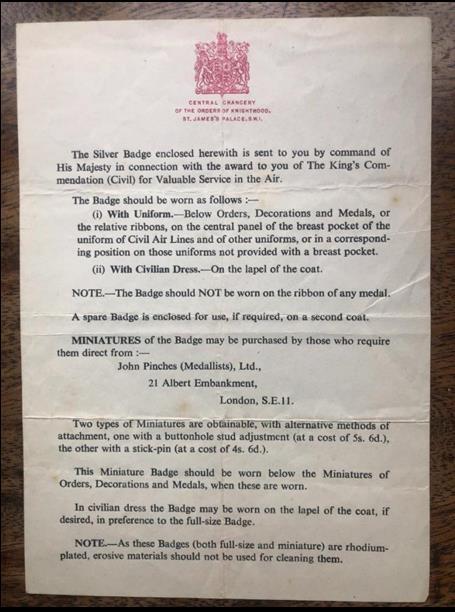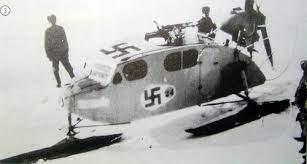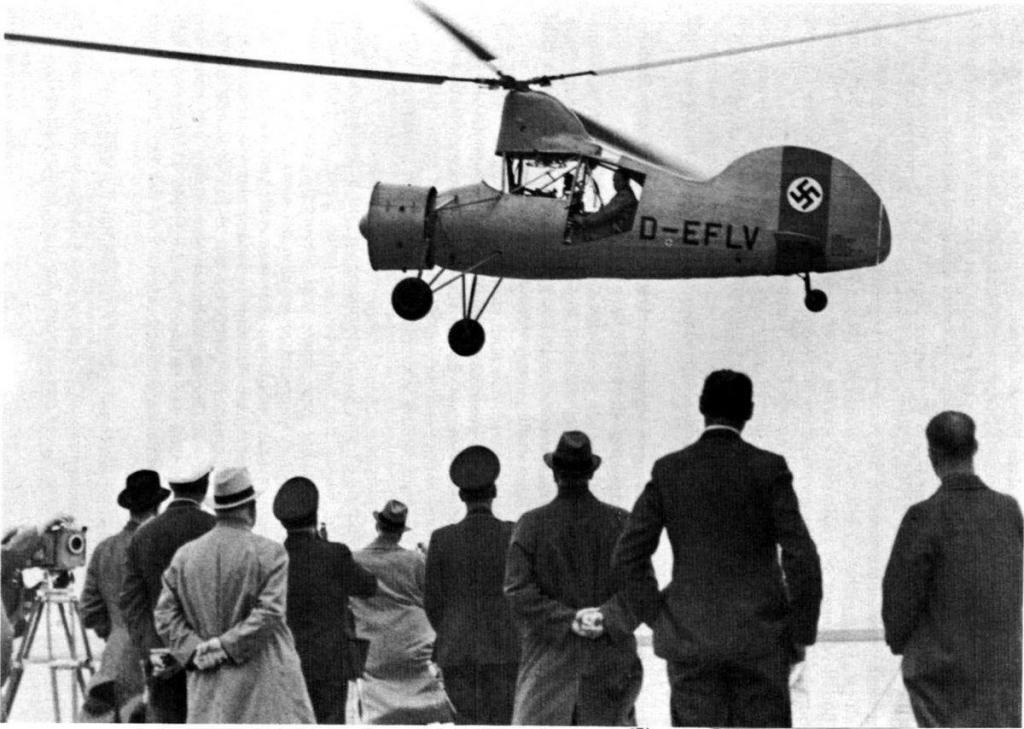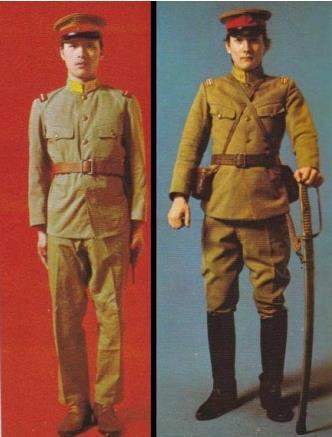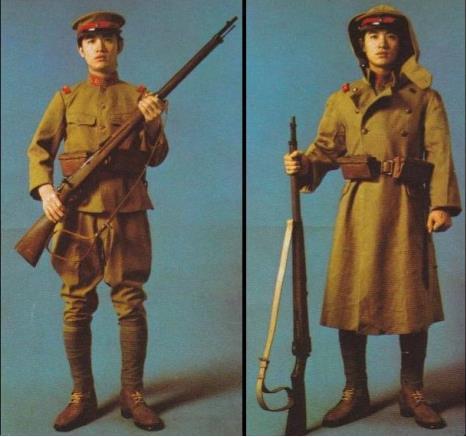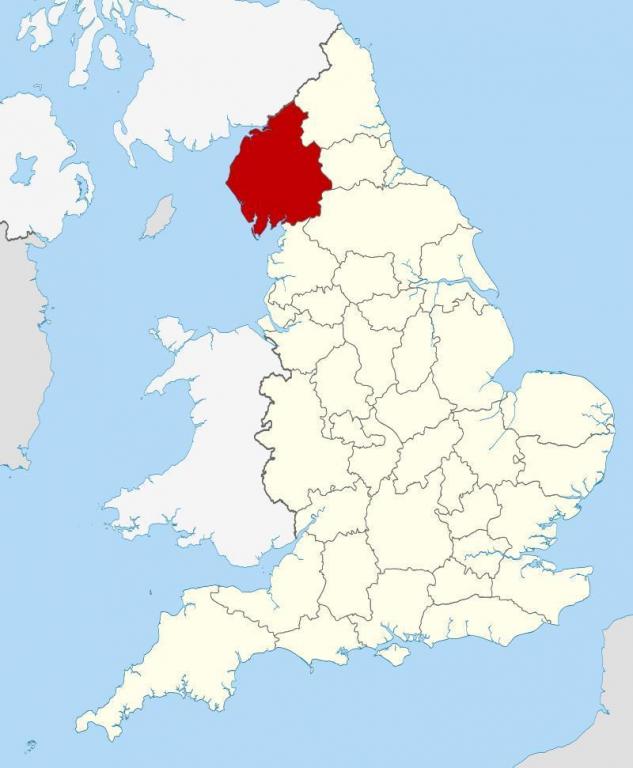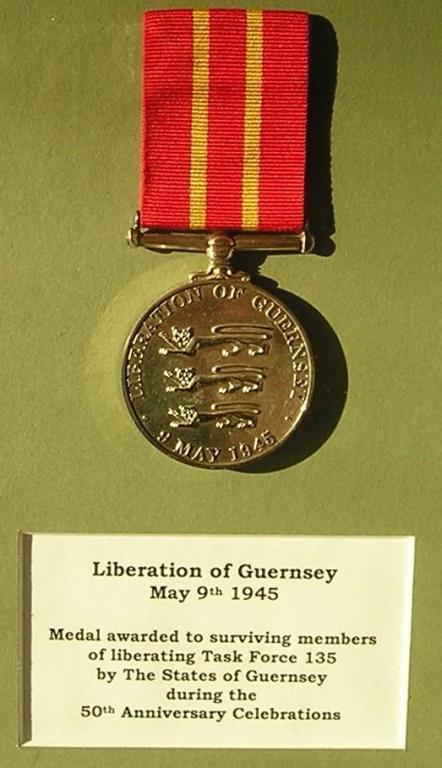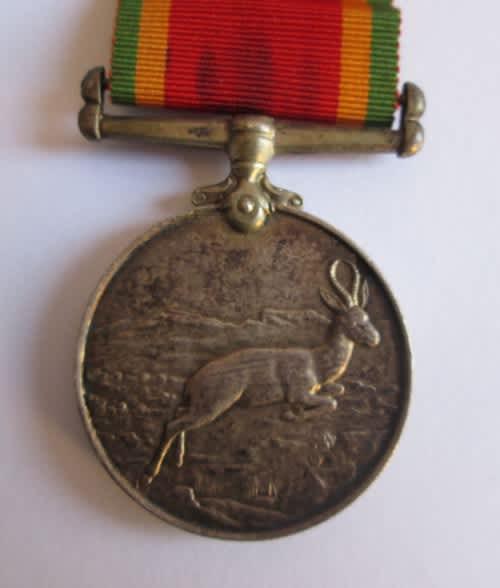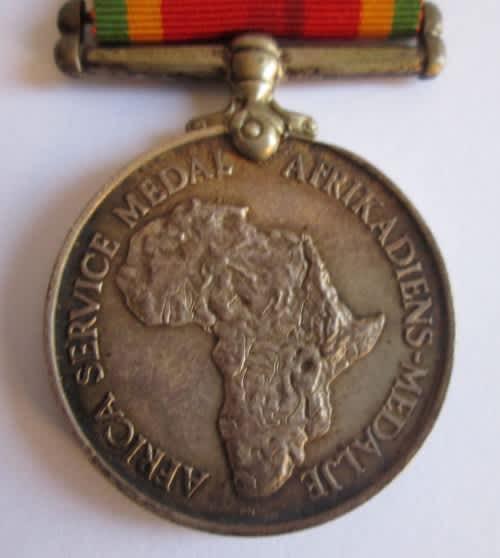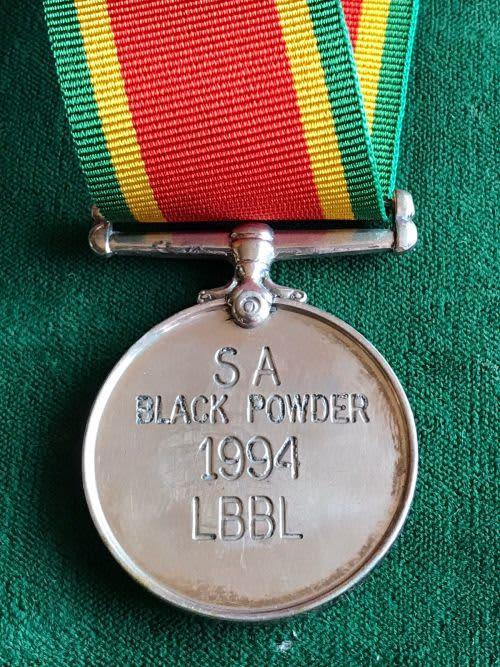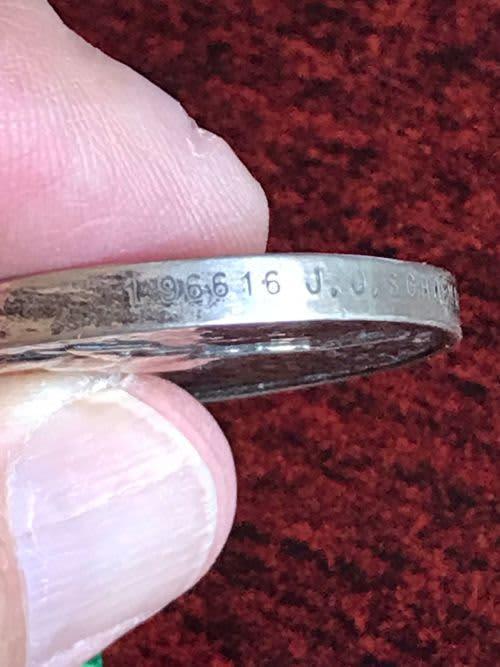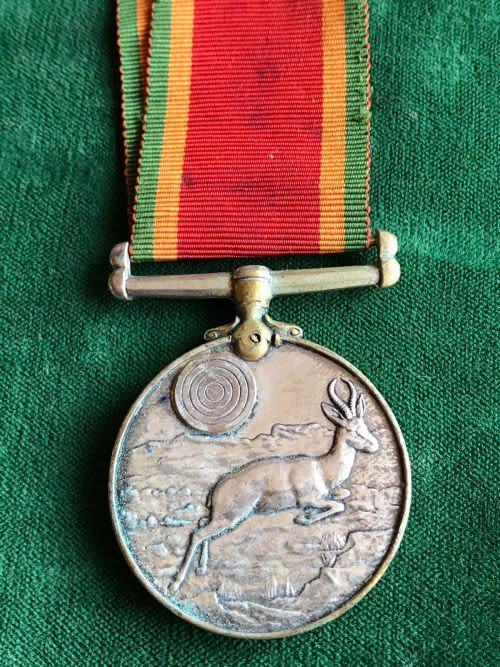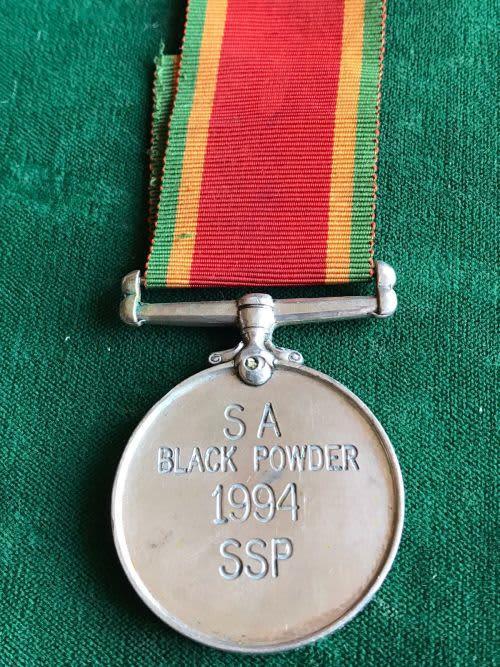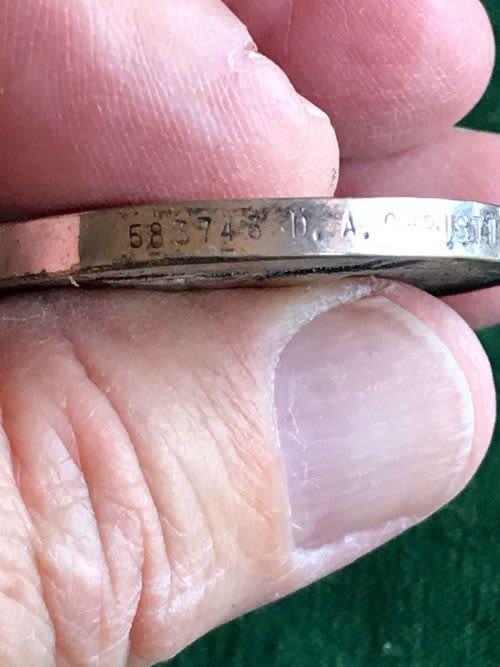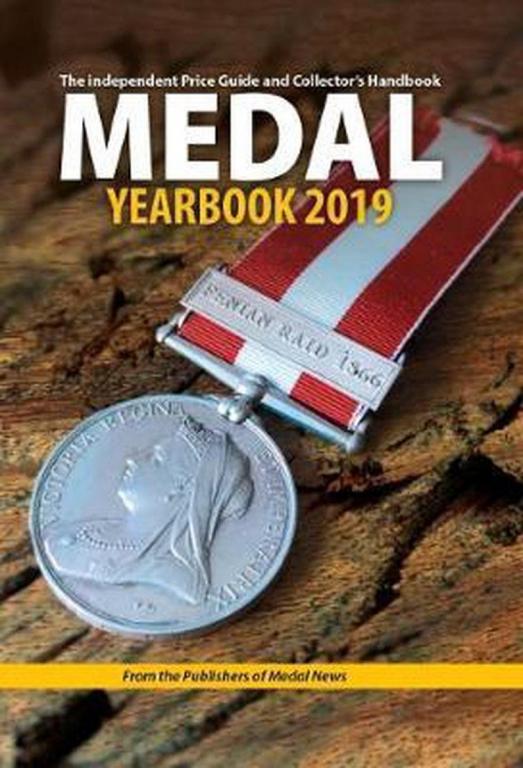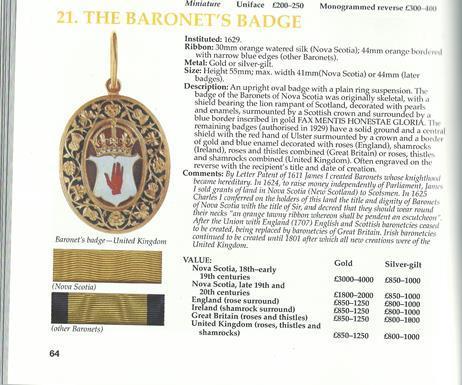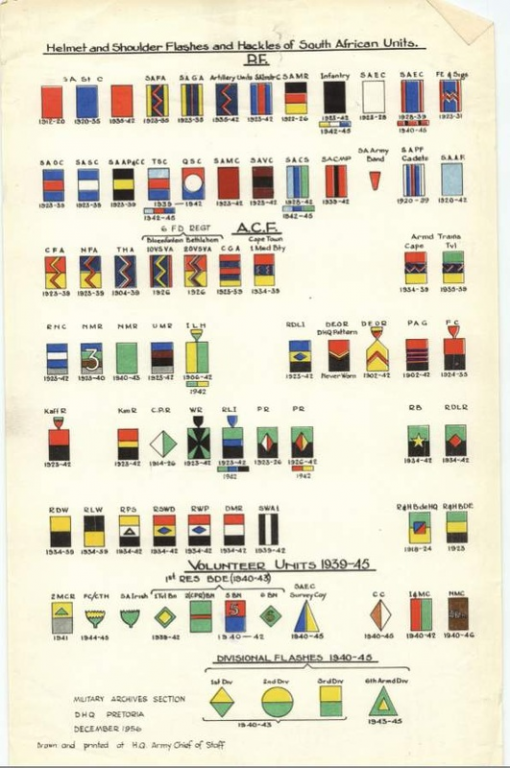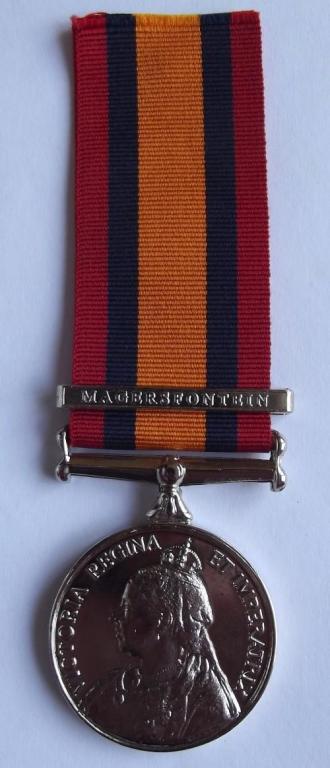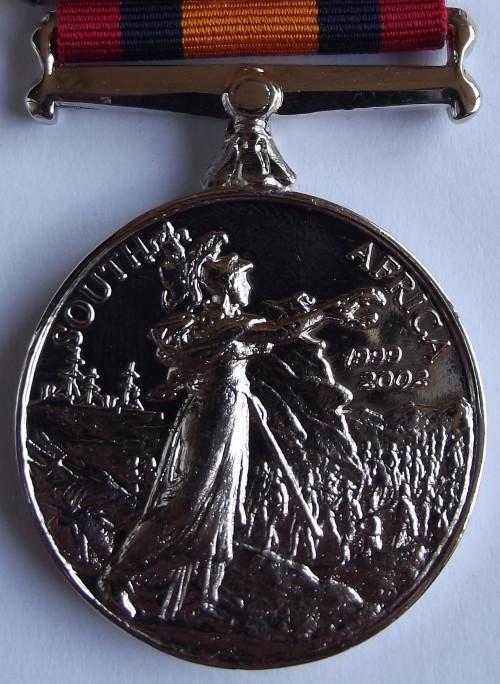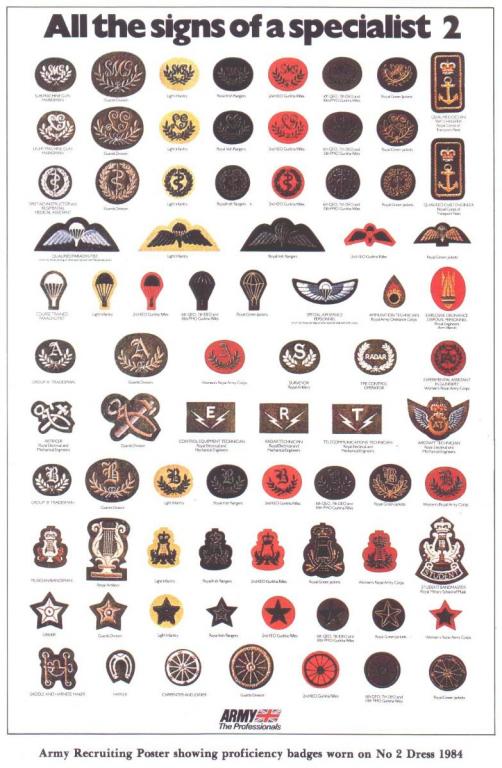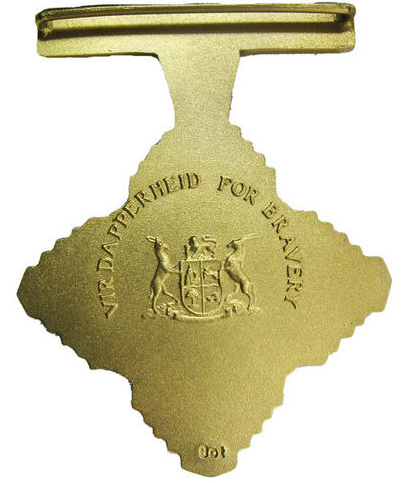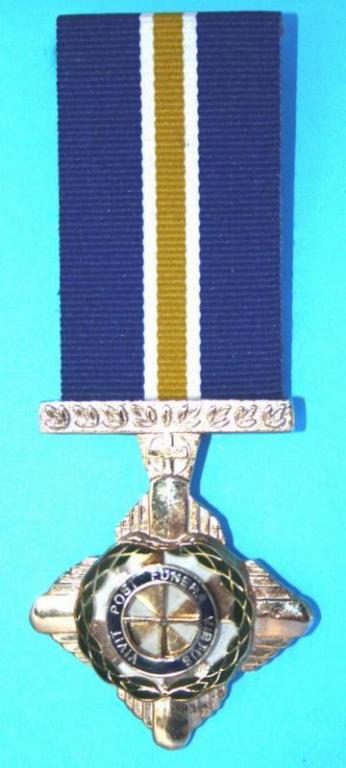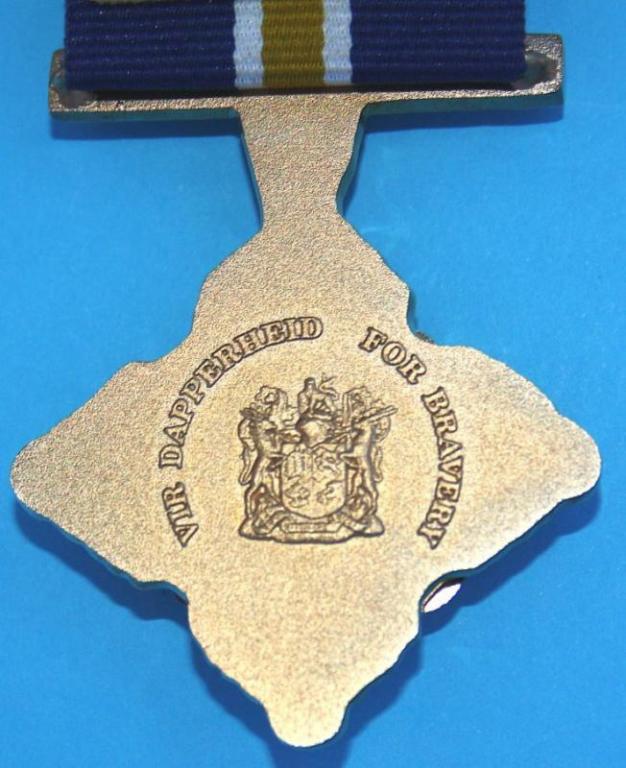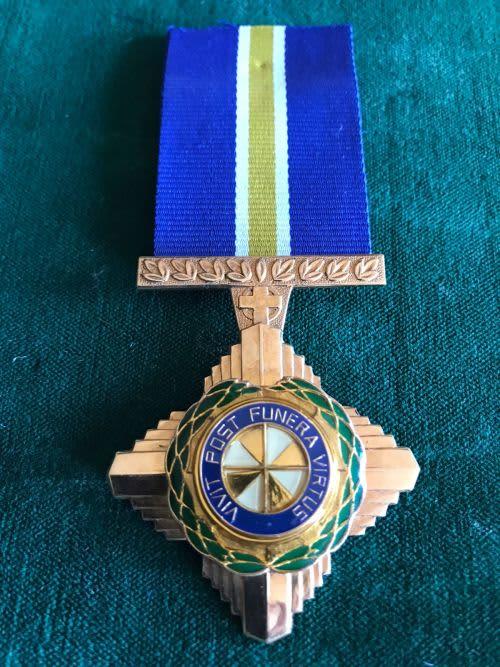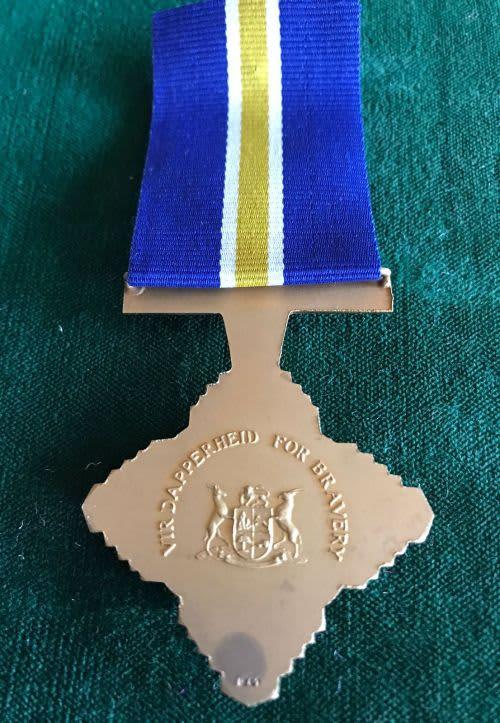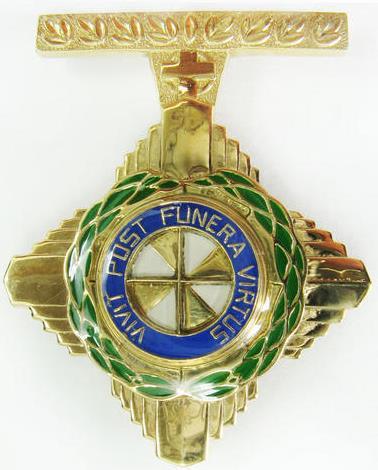-
Posts
352 -
Joined
-
Last visited
-
Days Won
1
Content Type
Profiles
Forums
Blogs
Gallery
Events
Store
Everything posted by Marcon1
-

South African Victory Medals
Marcon1 replied to JPL's topic in Inter-Allied Victory Medals of the Great War
Hiya, Take another look at your 'unnamed' one. I can see faint traces of letters and numbers on pictures 3 and 4, which would indicate this medal has been skimmed. Picture 3 - right centre. Picture 4 - centre (what looks to be the letters R D). regards, Marcon1. -

WW2 Wasser Wagen
Marcon1 replied to Graf's topic in Germany: Third Reich: Uniforms, Headwear, Insignia & Equipment
-

WW2 Wasser Wagen
Marcon1 replied to Graf's topic in Germany: Third Reich: Uniforms, Headwear, Insignia & Equipment
-
Order of Thohoyandou (1977-94) (1981-1994) For distinguished service to Venda. The order was divided into four classes: Grand Cross - for heads of state and prime ministers. Grand Commander Commander Officer Insignia: A green-enamelled oval shield framed by two ivory tusks and depicting a golden elephant head (obverse) and the Venda national arms (reverse). The first three classes are worn around the neck, and the fourth on the chest. The Grand Cross and Grand Commander also have a gold 8-pointed breast star displaying the badge. The Order of Thohoyandou – The symbols of the orders are in the form of an oval shield made from silver, framing and a facing elephant head by tusks in ivory. The higher the order the more ornate with a 8 pointed star and gilt multi rayed star. Some of the decorations have makers and silver mark. Marcon1. NB: I have seen just 2 full sets being offered on Ebay and BidorBuy in the last 5 years, so they are pretty scarce.
-
Hiya, My 2 cents. Japanese officers summer (left) and winter (right) uniform from Taisho period (july 30th 1912 - december 25th 1926) Japanese private summer (left) and winter (right) uniform from Taisho period (july 30th 1912 - december 25th 1926) Marcon1
-
Hi dpast32, Very unlikely, as CUMBERLAND & WESTMORELAND CONSTABULARY is in the Northwest of England. While Hornchurch = Hornchurch is a suburban town in East London, England, and part of the London Borough of Havering. It is located 15.2 miles east-northeast of Charing Cross. There police force is Metropolitan Police. So you can see, miles apart and therefor most likely 2 different persons. The name William Wilson is a very common name. Marcon1.
-
Did you know about.... The Guernsey Liberation Medal… Feb18 Over recent years observers watching the November Veteran march-pasts at the Cenotaph in London have spotted a new medal with a rather brightly coloured ribbon appearing on the blazers & jackets of some of the former proud old soldiers taking part in this annual Act of Remembrance… and subsequent investigations have revealed it to be the Guernsey Liberation Medal that was first struck in 1995 and issued to the surviving members of Allied Force 135, the soldiers who originally liberated the Bailiwick of Guernsey on May 9th 1945 after 6 long years of German Occupation… On May 8th as the German forces laid down their weaponry, the islanders broke out their hidden radios to hear Winston Churchill announce that “our dear Channel islands would once again be free.”. Meanwhile the Destroyer HMS ‘Bulldog’ had sailed for Guernsey waters under the code-name ‘Operation Nest Egg’, to drop anchor on May 9th just off St Peter Port’s harbour. The official surrender by Germany’s Major-General Heiner then took place aboard Bulldog, after which a lone Royal Naval LCI sailed into the harbour and the entire German garrison of some 10,000 men handed over the reins of command to just 30 British artillerymen and the initial joy at deliverance from German Occupation on that sunny day in May 1945 has never been forgotten and today May 9th is enshrined in as ‘Liberation Day’, an official holiday across all of the Channel Islands. But what of those young British soldiers who originally came ashore on that wonderful day in 1945? This was a question that ex-pat Guernseyman John Richards, (a former advertising executive living in Hampshire), had often pondered but not knowing just how many Vets might even still be living, he joined forces with former Deputy Director of Guernsey Tourism (and a former officer in the Hampshire Regt), Major Evan Ozanne Ret. and the pair began a painstaking hunt across some 42 countries in an effort to trace those original members of Force 135. As they were doing so, sketches for the design for an original Liberation medallion were being made, incorporating the 3 Guernsey Lions to the front of the medal and the legend ‘Operation Nest Egg. Fiftieth Anniversary of Liberation .Task Force 135’ on the obverse; with a suggestion that the ribbon be two yellow vertical lines on a red background in representation of the colours of the Bailiwick of Guernsey and redolent of the triangular badge worn on the battle-dress shoulders of the liberating soldiers of Force 135. Final designs were subsequently submitted to London medal makers Toye, Kenning & Spencer and the official Force 135 Liberation Medal, to be worn on the right breast, was born. By now John Richards & Evan Ozanne had located some 210 veterans from the original 1945 Operation Nestegg’ and, on Liberation weekend in 1995, a number of them were invited over to Guernsey to be presented with their medallion by the Bailiff of Guernsey, Sir Graham Dorey, whilst those unable able to make the trip were officially presented with their medallions in their home towns, as a small but heartfelt token of gratitude from the people of Guernsey to those young soldiers who came ashore on that joyful and emotional day in 1945.. Marcon1.
-
WW2 AFRICA SERVICE MEDAL The real thing. I saw these medals being offered on Bid-or-Buy (SA) First I thought they were original medals that were messed with. But now I think they are shooting medals made to look like the real thing (the obverse). and another. So, look twice before you buy. Marcon1.
-

WW2 Wasser Wagen
Marcon1 replied to Graf's topic in Germany: Third Reich: Uniforms, Headwear, Insignia & Equipment
Hiya, You should try Google Images and type German Amphibian Car - plenty of pictures (modern and original black-white pictures). What do you think of this one ? It's a Land-Wasser Schlepper. (Boat with tracks) Marcon1. -

Two nice Baronet badges
Marcon1 replied to Graf's topic in Great Britain: Orders, Gallantry, Campaign Medals
-

Two nice Baronet badges
Marcon1 replied to Graf's topic in Great Britain: Orders, Gallantry, Campaign Medals
Hi Graf, The Medal Yearbook is published each year by token publishing in the U.K. (www.tokenpublishing.com). Lots of information and prices of "all" British medals as well as Australia, New-Zealand, Canada, Ireland and South-Africa. (the last one needs a update as it only shows medals before Mandela became President). medalbook.pdf Document_2021-08-15_184647.pdf Document_2021-08-15_184445.pdf -

Two nice Baronet badges
Marcon1 replied to Graf's topic in Great Britain: Orders, Gallantry, Campaign Medals
Hi Graf, According to the Medal Yearbook it exist in both gold and Silver-gilt. Marcon1. -
Zimbabwe: Medal in Defence of Zimbabwe Economic Life Line Mozambique Circular bronze medal with integral ribbon bar bearing the emblem of the Zimbabwe National Army; the face with a circular central medallion showing a pipeline, road and rail track on a stippled ground within a ring inscribed ‘IN DEFENCE OF ZIMBABWE • ECONOMIC LIFE LINE - MOZAMBIQUE’; the reverse plain’; on original ribbon. The Medal was instituted to recognise service in Mozambique in 1984-1985 against the pro-Western armed forces of RENAMO (Resistência Nacional Moçambicanain = Mozambican National Resistance) in defence of the vital road, railway and oil pipeline from Beira on the coast to Mutare (previously Umtali) on the Mozambican border. The medal is very rarely seen. I've not yet been able to discover the year of issue. (instituted). I did notice that Megan (Medalsoftheworld) does not list this medal, must be really rare ?
-

Help needed to ID Lions Head Belt buckle
Marcon1 replied to Jersey Bouy's topic in United States of America
Looks like this one. I used Google images and typed 19th century military lion belt buckle. Plenty of lions including this one. No country or regiment mentioned, so still a mystery. Marcon1. -

Does US medals confer post-nominals?
Marcon1 replied to Wessel Gordon's topic in United States of America
Hiya, Found this on Wikipedia: Order of post-nominals in the United States See also: List of professional designations in the United States In the United States, standard protocol is to list post-nominal letters in the following order:[20] Religious institutions Theological degrees Military decorations Academic degrees Honorary degrees, honors, decorations Professional licenses, certifications and affiliations Retired uniformed service. Active duty services personnel do not use any post-nominals other than, if applicable, Staff Corps affiliation (Navy only) followed by a comma and then their branch of service. Names are bracketed by the appropriate pre-nominal and post-nominal, e.g. LCDR John Q Public, MC, USN.[20] -
Hiya, I found this medal being offered on BidorBuy. 1999 - 2002 Boer War Centenary Queen South Africa Medal With Magersfontein Bar. Who can tell me more, thanks for any information. Marcon1.
-
SAP Cross for Bravery: Gold (PCFG) (1989-2004) Awarded for outstanding bravery in extreme danger. First awarded (1991) to Maj André du Toit, for twice single-handedly disposing of bombs, and for bravery while leading a raid on an armed fugitive's hideout. Insignia: Same design as the 1963 PCF, but smaller and with a narrower ribbon, and worn on the chest. 18ct. Gold. (1989 - 2004) 9ct. Gold. (1989 - 2004) No 'gold' marking Who cares about a carat more (or less) ? Marcon1.
-
SAP Cross for Bravery: Gold (PCFG) (1989-2004) Awarded for outstanding bravery in extreme danger. First awarded (1991) to Maj André du Toit, for twice single-handedly disposing of bombs, and for bravery while leading a raid on an armed fugitive's hideout. Insignia: Same design as the 1963 PCF, but smaller and with a narrower ribbon, and worn on the chest. 18ct. Gold. (1989 - 2004) 9ct. Gold. (1989 - 2004) No 'gold' marking Who cares about a carat more (or less) ? Marcon1.


